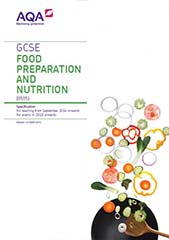3.3 Food science
This section requires students to demonstrate their knowledge and understanding of the following subject content:
Cooking of food and heat transfer
Why food is cooked and how heat is transferred to food
|
Content |
Students must know and understand |
Suggested application and food preparation skills |
|---|---|---|
|
Food is cooked to:
How preparation and cooking affect the appearance, colour, flavour, texture, smell and overall palatability of food. How heat is transferred to food through:
|
For sauce making:
|
Selecting appropriate cooking methods
|
Content |
Students must know and understand |
Suggested application and food preparation skills |
|---|---|---|
|
Selection of appropriate preparation, cooking methods and times to achieve desired characteristics. |
|
|
Functional and chemical properties of food
Proteins
|
Content |
Students must know and understand |
Suggested application and food preparation skills |
|---|---|---|
|
|
|
Carbohydrates
|
Content |
Students must know and understand |
Suggested application and food preparation skills |
|---|---|---|
|
|
|
Fats and oils
|
Content |
Students must know and understand |
Suggested application and food preparation skills |
|---|---|---|
|
|
|
Fruit and Vegetables
|
Content |
Students must know and understand |
Suggested application and food preparation skills |
|---|---|---|
|
the scientific principles underlying these processes when preparing and cooking food. |
|
Raising agents
|
Content |
Students must know and understand |
Suggested application and food preparation skills |
|---|---|---|
|
|
|
